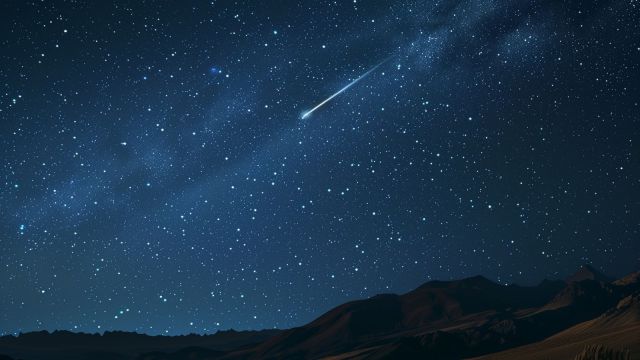Taurid Fireball meteor shower 2025: Date, timings, and more
Taurid fireballs are easier to see with the unaided eye because they are brighter and move more slowly than normal fast-moving meteors.
 A meteor that burns so brightly in the night sky that it even outshines the planet Venus is called a fireball.(Representational Image/ Freepik)
A meteor that burns so brightly in the night sky that it even outshines the planet Venus is called a fireball.(Representational Image/ Freepik)The annual Taurid meteor showers are back to excite stargazers. The Taurids, which come in two components — the Southern Taurid and the Northern Taurid — seem to originate from a point in the constellation Taurus, which rises in the eastern sky in the hours before midnight during October, as their names imply.
Additionally, they have a common parent in the shape of the roving comet 2P/Encke, which travels around the sun for 3.3 years and leaves behind a massive loop of debris.
Since Taurus is at its tallest in the sky between midnight and dawn, experts advise seeing the fireball meteor showers around this time. Taurid fireballs are easier to see with the unaided eye because they are brighter and move more slowly than normal fast-moving meteors.
The sights we see in the sky are caused by dust and other matter particles heating up as Earth passes through this junk because of the friction of our planet’s atmosphere.
A meteor that burns so brightly in the night sky that it even outshines the planet Venus is called a fireball. When something that is a few inches to several feet in size collides with our environment, they are produced, and it frequently leaves noticeable trails behind it.
When to watch it
With activity spanning from October 11 to late November, the Taurids are persistent. While the Northern Taurids peak in mid-November, the Southern Taurids dominate the early phase, culminating in late October. According to a Forbes report, astronomers expect the Northern Taurids to put on their best show in 2025 on November 12.
Although the showers can be seen everywhere, the optimum viewing conditions will be in darker skies away from city lights.
Under dark sky conditions, ideally, stargazers could see up to five meteors per hour during each phase of peak activity, while the light of a full moon would likely blot out smaller meteors during the Southern Taurid peak.
As the Taurid meteor showers flare in the post-sunset sky, they can occasionally produce spectacular fireballs that can momentarily change night into day.
The same widely scattered debris cloud gives rise to both the northern and southern Taurids. According to the American Meteor Society, there has been a notable increase in fireball activity at times when both are active.







